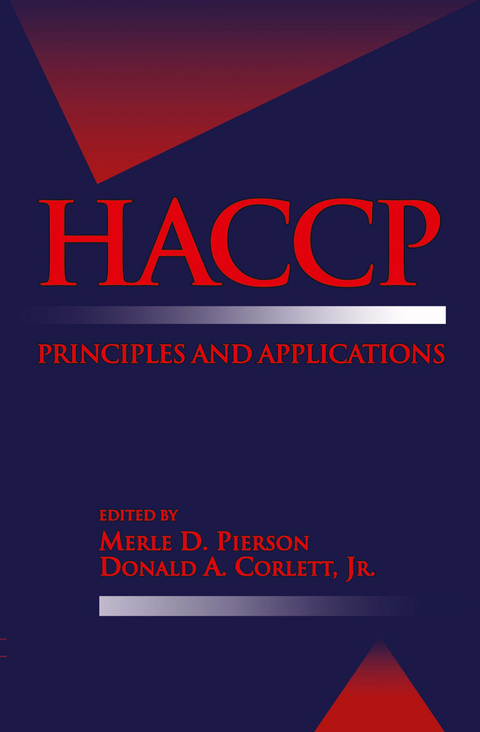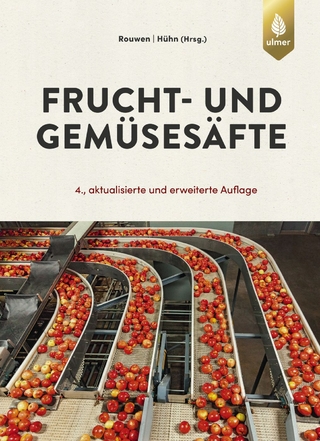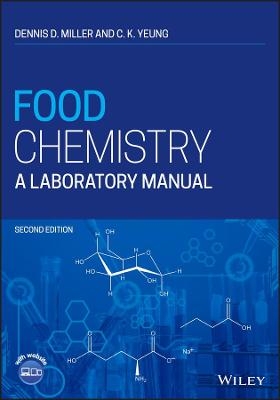
HACCP
Springer-Verlag New York Inc.
978-1-4684-8820-3 (ISBN)
The Institute of Food Technologists (1FT) sponsors each year a two-day short course that covers a topic of major importance to the food industry. "Hazard Analysis and Critical Control Points" was the title for the short course which was held May 31-June 1, 1991, immediately prior to the 51st Annual 1FT Meeting. These short courses have been published as a proceedings in previous years; however, the current and future importance of the Hazard Analysis and Critical Control Point (HACCP) system prompted publication of the 1991 short course as a book. This book is designed to serve as a reference on the principles and application of HACCP for those in quality control/assurance, technical man agement, education and related areas who are responsible for food safety man agement. The National Advisory Committee on Microbiological Criteria for Foods (NACMCF) published in November 1989 a pamphlet titled "HACCP Principles for Food Production" (Appendix A). This document dealt with HACCP as applied to the microbiological safety of foods; however, the principles can be modified to apply to chemical, physical and other hazards in foods. The principles rec ommended by the NACMCF have been widely recognized and adopted by the food industry and regulatory agencies. Implementation of these principles pro vides a proactive, preventive system for managing food safety. HACCP should be applied at all stages of the food system, from production to consumption.
1 Introduction to HACCP.- References.- 2 HACCP: Definitions and Principles.- References.- 3 Overview of Biological, Chemical, and Physical Hazards.- Biological Hazards.- Chemical Hazards.- Physical Hazards.- References.- 4 Hazard Analysis and Assignment of Risk Categories.- Overview.- Microbiological Hazard Characteristic Ranking.- Chemical and Physical Hazard Risk Assessment Procedures.- Examples of the Combined Hazard Analysis for Cheese Dip.- References.- 5 Determining Critical Control Points.- Representative CCPs.- Low-acid Canned Foods CCPs.- Summary.- 6 Establishing Critical Limits for Critical Control Points.- Limits: Definitions & Guidelines.- Establishing Limits for Critical Control Points.- Conclusion.- References.- 7 Monitoring Critical Control Point Critical Limits.- What is Monitoring?.- Why Do We Monitor?.- How Do We Monitor?.- Where Do We Monitor?.- Who Monitors?.- When Do We Monitor?.- Summary.- References.- 8 Corrective Action Procedures for Deviations from the Critical Control Point Critical Limits.- Corrective Action Activities.- References.- 9 Effective Recordkeeping System for Documenting the HACCP Plan.- Types of HACCP Records.- Record Review and Retention.- The HACCP Plan.- Summary.- 10 Verification of the HACCP Program.- Importance.- Prevention.- Team Approach.- Essential Elements.- Critical Control Point Verification.- Verification vs. Monitoring.- HACCP Program Verification.- Finished Product Testing.- Records.- Written Report.- 11 Control Points and Critical Control Points.- Definitions.- Comprehensive Product Control System.- Summary.- References.- 12 Putting the Pieces Together: Developing an Action Plan for Implementing HACCP.- Where Does HACCP Fit into a Company?.- Establishing HACCP Accountabilities.- Establishing the HACCP ImplementationProject Plan.- Establishing Policy.- Appointment of the Core HACCP Coordinator and Team.- Development of the Product Specific HACCP Plan.- Developing Production Supervisor or Individual Operator Procedures.- Getting the Job Completed.- References.- 13 HACCP System in Regulatory Inspection Programs: Case Studies of the USDA, USDC, and DOD.- USDA-FSIS HACCP Project.- NMFS HACCP Project.- Joint FDA/NOAA Seafood Inspection Program.- HACCP Applications in Food Procurement and Handling for DOD.- Conclusions.- References.- 14 Practical Application of HACCP.- Product Description.- Risk Assessment.- Process Flow Charts.- Critical Control Points and Limits.- Models.- Application of HACCP to Foodservice.- Summary.- References.- A HACCP Principles for Food Production.- C National Advisory Committee on Microbiological Criteria for Foods, Hazard Analysis and Critical Control Point System Adopted March 20, 1992.
| Zusatzinfo | XI, 212 p. |
|---|---|
| Verlagsort | New York, NY |
| Sprache | englisch |
| Maße | 155 x 235 mm |
| Themenwelt | Technik ► Lebensmitteltechnologie |
| ISBN-10 | 1-4684-8820-1 / 1468488201 |
| ISBN-13 | 978-1-4684-8820-3 / 9781468488203 |
| Zustand | Neuware |
| Haben Sie eine Frage zum Produkt? |
aus dem Bereich


